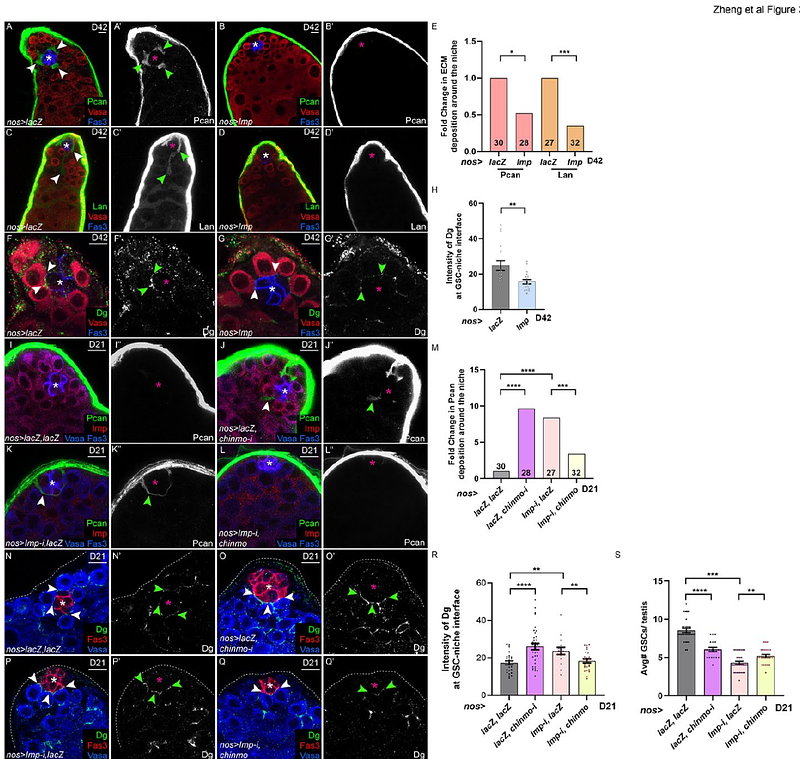Age-related declines in niche self-renewal factors controls testis aging and spermatogonial stem cell competition through Hairless, Imp, and Chinmo

Age-related declines in niche self-renewal factors controls testis aging and spermatogonial stem cell competition through Hairless, Imp, and Chinmo
Zheng, Y.; Lee, Y.-C.; Wang, Y.-T.; Chiang, P.-K.; Chang, S.-L.; Hsu, H.-J.; Hsu, L.-S.; Bach, E.; Tseng, C.-Y.
AbstractAging is associated with progressive tissue decline and shifts in stem cell clonality. The role of niche signals in driving these processes remains poorly understood. Using the Drosophila testis, we identify a regulatory axis in which age-related decline of niche signals (BMPs) lead to upregulation of the co-repressor Hairless, which downregulates the RNA-binding protein Imp in aged germline stem cells (GSCs). Reduced Imp causes loss of Chinmo, a key factor in GSC aging and competition. Reduced Chinmo causes ectopic Perlecan secretion which accumulates in the testis lumen and causes GSC loss. Aging of the testis is reversed by increasing BMPs in the niche, or by overexpressing Imp or depleting Hairless in GSCs. Furthermore, GSC clones with reduced Imp or increased Hairless are more competitive, expelling wild-type neighbors and monopolizing the niche. Thus, BMPs regulate testicular niche aging through the Hairless/Imp/Chinmo axis and winning GSCs usurp these aging mechanisms.